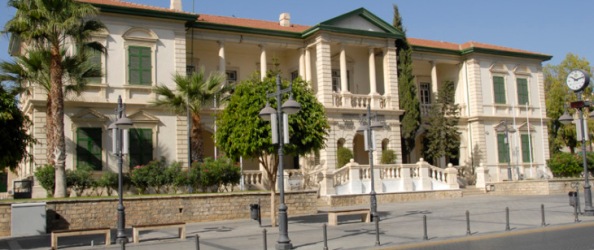
COSTAS Georghiou, who has spent years working on his book British Colonial Architecture in Cyprus, hesitates when I ask him for the most typical example of a British era building.
He argues that there is no such thing as a quintessential sample of British colonial architecture in a way that, once explained, seems obvious since architecture does not stand outside time, and Georghiou’s book spans almost a century – from the British taking over from the Ottomans in 1878 to when Cyprus achieved independence in 1960.
The legacy of that period includes over 700 surviving colonial buildings, and an extensive infrastructure of roads, installations and facilities.
Georghiou spent the first 17 years of his life under British rule. His father was a civil servant and Georghiou was fascinated by the architectural plans used by the public works department staff. He caught the bug and went on to have a successful career in architecture, eventually making a life for himself in the UK after losing everything in the Turkish invasion. Later in his life, during visits to other former colonies and particularly India, he witnessed the tangible marks of the legacy of colonialism in the buildings from that era.
For many Greek Cypriots, British rule remains a political and emotional minefield and this is reflected in their ambivalent attitude towards colonial architecture, but Georghiou wanted to record this part of Cyprus’ history, to understand it better, even where the colonists used their buildings to assert power over the locals. Feeling there was a “dearth of research and publications” on this part of Cyprus’ heritage Georghiou spent about three years digging up architectural plans, documents, visiting sites and talking to people in Cyprus and abroad.
One of the first things he tells me is that “there is no single style of architecture. Like in all colonies things varied with time and circumstances”.
But surely there are buildings that people can view as classic examples of British colonial architecture in Cyprus?
“There isn’t a typical British style,” Georghiou reiterates, but indulges me anyway and gives me a few examples from his book of “what the Cypriots think of (as) colonial style”. Think big stones and imposing, dignified buildings such as what used to be the former colonial secretary’s lodge, now housing the Cyprus Cultural Foundation, a beautiful building across from the interior ministry in Nicosia. “That is the typical…” Georghiou begins to say and then pauses to add: “you say typical; it is one of the styles.”
Built in the early 1920s and remodelled in 1937, the building is well adapted to the Cyprus weather with perimeter verandas offering protection from the elements and a roof ventilated with several dormers.
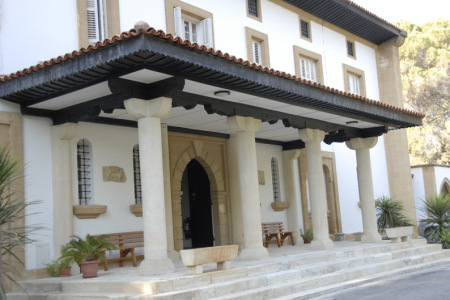
British High Commissioner’s residence in northern Nicosia until 1974 was once the private residence of a top colonial official built in 1933
“Three distinct but not watertight periods of architecture” do emerge, from 1878 until the First World War, during the inter-war period and post-World War Two to the inception of the republic in 1960 with Cyprus’ independence.
Even so, there are many styles encompassing British colonial architecture in Cyprus that reflect both internal and external influences but also act as a commentary on the times. For example, after the October 1931 uprising in Cyprus against colonial rule, British policy changed to incorporate local architecture elements “to show they respected local culture and civilisation”.
And when after the Second World War it became obvious the British Empire’s foundations were shaky, colonial governments across the world started using a “neutral commonwealth style” with no symbols or representations.
“The British were realists, they were pragmatic and would build according to circumstances, their policies, expediency and all sort of things,” says Georghiou.
So here is a pragmatic response to the locals burning down the colonial administration’s first Government House in Nicosia during the 1931 uprising: they fined the locals to fund building a new house via the proceeds that also doubled as punishment.
Although the new building – now the Presidential Palace – carried the British royal crest that was pretty much the only British thing, Georghiou said. “All elements are copies from Cyprus monasteries, churches (and) mediaeval palaces.”
That development was very different from when the British first arrived in Cyprus in 1978. “Then there was no pretence they were making any concessions in style at least to local architecture,” says Georghiou.
The new administrators brought styles from other colonies with them and established the public works department soon after their arrival. The first Government House was a timber construction that came in flat packs. “IKEA is not a new thing,” he says.
The first law courts and district administration buildings were a mix of eclectic Victorian-style architecture and bungalow-style buildings from India with their double ventilated roofs creating a climatically adapted and distinctive architecture, Georghiou says.
British architects would come and live in Cyprus, often working alongside Cypriot craftsmen, although sketch designs were often obtained from Britain. Architects from Malta, also a colony, were encouraged to move to Cyprus. Though there were expert master builders and craftsmen on the island, there weren’t any formally trained Cypriot architects at the time.
The Maltese Joseph Gaffiero became one of the most influential architects of that time and the following inter-war period, leaving behind landmark buildings including the post office and land registry building in Paphos in 1919, and the Limassol hospital in 1922.
That was during the stage of developing colonial architecture and infrastructure. Between the two world wars, and with Cyprus officially declared a crown colony in 1925, there was investment and development. The colonial administration started incorporating Cypriot architectural elements, although the British “studiously avoided any Greek revival styles because Greek Cypriots used neoclassical revival styles to say we are Greeks and we want Enosis,” Georghiou said referring to the Greek Cypriot movement pushing for unification with Greece. The one exception was the Cyprus museum’s portico, but this was never repeated.
In time, Cyprus would boast notable local architects including Polys Michaelides who prepared in 1935 the plans for a new Nicosia GeneralHospital that was demolished – not without protests – in 2010. Polys spent some time working in Paris with pioneering Swiss architect Le Corbusier and helped introduce modernism in Cyprus. He designed a sleek, minimalist building that was altered in the 1950s in various ways that mutilated the original design aesthetic, Georghiou says.
After the Second World War, the style changed again to a more neutral, modernist style, favouring concrete over the more expensive stone. The Labour government in Britain was pushing on with its welfare programme, subsiding affordable housing. The colonial government in Cyprus followed on a smaller scale version and launched a “Subsidised Workers’ Housing” programme in the Omorphita suburb of Nicosia. The public works department prepared plans in 1945-46 for housing, a primary school, play grounds, a coffee shop, among others. A comparable project took place in Famagusta’s Stavros.
Towards the end of British colonial rule the style became “very severe” with framed constructions of reinforced concrete.
The buildings left behind as a relic of this time – many built for private use by the rising Cypriot middle class itself – are part of the Cyprus landscape, Georghiou says. “You recognise them as belonging to Cyprus.” But he agrees with Welsh historian Jan Morris, who has written extensively on the British Empire, that “architecture is the badge of sovereignty”. Perhaps this is why there are “silly” people talking of removing the royal crest from the stately Presidential Palace for example.
That royal crest may well encapsulate for many Greek Cypriots the painful sovereignty the British went to such great lengths to impose and maintain, but for Georghiou a country cannot, and therefore should not, try to escape its past.
“You cannot rewrite history by removing it,” says Georghiou. “It’s the sort of thing certain countries do that shows a lack of confidence.”And anyway, the buildings “belong to us” he says, just like the buildings of other past conquerors, the Venetians and Luisignans.
The buildings, he says, stand as “silent but reliable witnesses to a past age”. Much like the iconic post boxes that are still to be found in former British colonies. Now painted yellow in Cyprus, but often still with EIIR emblazoned on the side, they are – like it or not – part of the island’s heritage.
Copies of ‘British Colonial Architecture in Cyprus’ are available from publishers, En Tipis Publications. Call 22-425185 or 22-767291. The book is also available at a number of bookshops in Cyprus. Email the author at Costas@CNGplanning.co.uk to buy the book in the UK. The paperback version costs 40 euros and the hardback goes for 55 euros.

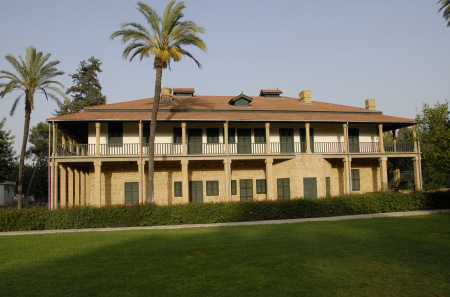
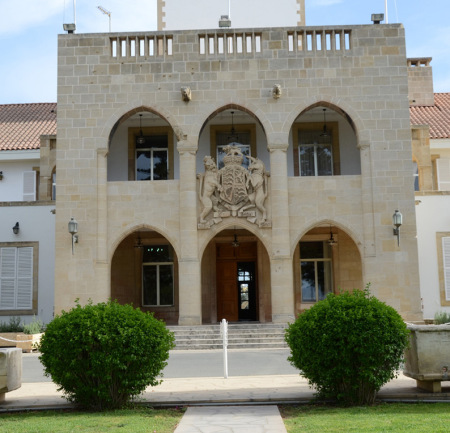
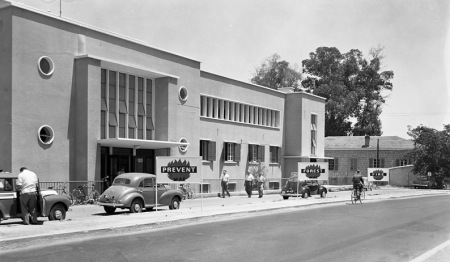
Posted on June 2, 2013
0